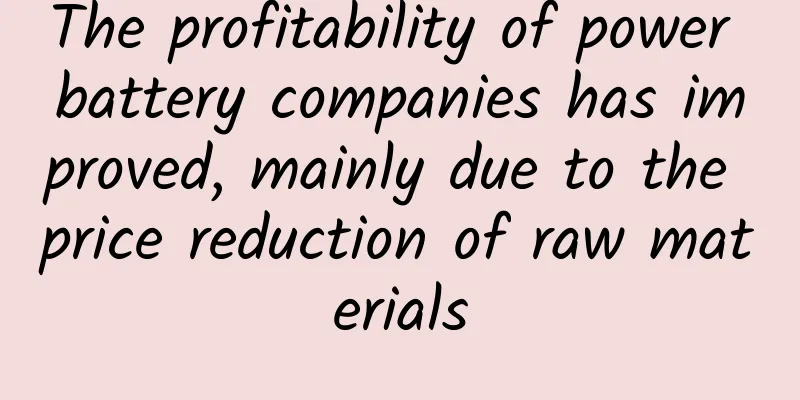|
1. Analysis of the national passenger car market in July 2023 Retail: In July 2023, the retail sales of passenger cars reached 1.775 million units, down 2.3% year-on-year and 6.3% month-on-month. July retail sales were the second highest in history, with a very strong trend. So far this year, the cumulative retail sales of passenger cars reached 11.299 million units, up 1.9% year-on-year. Retail sales in July this year were still the second highest point in the year, and July in previous years was generally the lowest point in normal monthly sales after February. This year's July showed a mild month-on-month decline above the peak in June, which is still a relatively strong trend. As the auto market entered the extended implementation period of National VI B in July, the rapid increase in promotional prices in the first half of the year has ended. The auto market entered a period of slow promotional growth in July, and the overall promotional intensity declined slightly. This is similar to the price trend in 2019, and the promotional effect on the auto market has weakened. The state has frequently issued guiding policies for automobile sales, aiming to further stabilize and expand automobile consumption. The Ministry of Industry and Information Technology and the Ministry of Commerce have promoted the development of new energy vehicles in rural areas, and launched activities such as the "100 Cities Linkage" Auto Festival and the "Thousands of Counties and Towns" New Energy Vehicle Consumption Season, which have achieved good results. Various promotional activities such as auto shows and the issuance of consumer vouchers in various places, as well as the strong sprint efforts of manufacturers at the end of the half year, have all had a good effect on boosting consumer confidence. Due to the combined influence of factors such as the early Spring Festival this year, the repeated failure of the expected stimulus policies, the surging promotion war for old National VI inventory, the expected six-month extension of old National VI vehicles and the low base last year, the cumulative retail sales in January-July reached 11.299 million vehicles, a year-on-year increase of 1.9%, which performed well. In July, domestic brands sold 940,000 vehicles, up 15% year-on-year and 1% month-on-month. In July 2023, domestic brands had a domestic retail share of 53.2%, up 5.8 percentage points year-on-year; in 2023, domestic brands had a cumulative share of 50%, up 4.4 percentage points from the same period in 2022. In July, domestic brands had a wholesale market share of 58.1%, up 8.3 percentage points from the same period last year; domestic brands gained significant growth in the new energy market and export market, and the transformation and upgrading of leading traditional automakers performed well. Traditional automakers such as BYD Auto, Geely Auto, Changan Automobile, and Chery Automobile had a significant increase in brand share. In July, mainstream joint venture brands sold 590,000 vehicles, down 28% year-on-year and 11% month-on-month. In July, the retail share of German brands was 20.8%, down 0.8 percentage points year-on-year, and the retail share of Japanese brands was 15.8%, down 5 percentage points year-on-year. The market share of American brands reached 7.7%, up 0.7 percentage points year-on-year. In July, the retail sales of luxury cars reached 240,000 units, down 22% year-on-year and 20% month-on-month. The shortage of luxury cars caused by the chip supply shortage last year has gradually improved. From January to July, the retail sales of luxury cars increased by 11% year-on-year, and the market performance was strong. Exports: Overall automobile exports this year continued the strong growth at the end of last year. According to the statistics of the China Passenger Car Association, passenger car exports (including complete vehicles and CKD) in July were 310,000 units, a year-on-year increase of 63% and a month-on-month increase of 4%. From January to July, passenger car exports were 1.99 million units, a year-on-year increase of 81%. In July, new energy vehicles accounted for 28% of the total exports. With the increase in export capacity, the export of independent brands reached 248,000 units in July, a year-on-year increase of 56%, and basically the same as the previous month; joint venture and luxury brands exported 60,000 units, a year-on-year increase of 90%. Production: In July, passenger car production was 2.101 million units, down 2.6% year-on-year and 4.3% month-on-month. Due to the switch of old inventory for the National VI emission upgrade, companies are extremely cautious in production. Among them, luxury brand production fell 5% year-on-year and 4% month-on-month; joint venture brand production fell 36% year-on-year and 16% month-on-month; independent brand production increased 24% year-on-year and 2% month-on-month. Wholesale: In July, the national passenger car manufacturers wholesaled 2.065 million vehicles, down 3.2% year-on-year and 7.6% month-on-month. The cumulative wholesale so far this year is 13.132 million vehicles, up 6.6% year-on-year. Driven by the promotion of the new energy market, the performance of some car companies is obviously differentiated. In July, independent car companies wholesaled 1.19 million vehicles, up 22% year-on-year and down 1% month-on-month. Mainstream joint venture car companies wholesaled 590,000 vehicles, down 34% year-on-year and 17% month-on-month. Luxury car wholesales 280,000 vehicles, down 13% year-on-year and 15% month-on-month. The main passenger car manufacturers performed well in July. There were 31 passenger car manufacturers with sales of more than 10,000 units (a decrease of 2 from the previous month), of which 7 had a growth rate of more than 30% from the previous month, and 4 had a growth rate of more than 10% from the previous month. Inventory: Due to the increase in production by manufacturers and the slowdown in retail sales in July, channel inventory increased slightly, resulting in a channel plus inventory trend where manufacturer production was 40,000 vehicles higher than wholesale, while manufacturer domestic wholesale was 20,000 vehicles lower than retail. Manufacturers and channels continued to reduce inventory by 500,000 vehicles from December last year to July this year, thus easing channel inventory pressure. New energy: In July, the wholesale sales of new energy passenger vehicles reached 737,000 units, a year-on-year increase of 30.7% and a month-on-month decrease of 3.1%. From January to July this year, the cumulative wholesale volume reached 4.279 million units, a year-on-year increase of 41.2%. In July, the new energy vehicle market retailed 641,000 units, a year-on-year increase of 31.9% and a month-on-month decrease of 3.6%. So far this year, the cumulative retail sales volume reached 3.725 million units, a year-on-year increase of 36.3%. 1) Wholesale: In July, the penetration rate of new energy vehicles of domestic brands was 52%; the penetration rate of new energy vehicles in luxury cars was 28.9%; and the penetration rate of new energy vehicles of mainstream joint venture brands was only 5.8%. In July, the wholesale sales of pure electric vehicles were 496,000 units, a year-on-year increase of 15.3% and a month-on-month decrease of 6.1%; the sales of plug-in hybrid vehicles were 242,000 units, a year-on-year increase of 80.0% and a month-on-month increase of 3.8%. New energy vehicles accounted for 33%, an increase of 9 percentage points over the same period. In July, the sales of extended-range electric vehicles among plug-in hybrids were 55,000 units, a year-on-year increase of 173% and a month-on-month increase of 4%. Extended-range electric vehicles accounted for 23% of the total plug-in hybrids, forming a good trend of high growth. In July, the sales volume of B-class electric vehicles was 145,000, a year-on-year increase of 69%, a month-on-month decrease of 11%, accounting for 29% of the pure electric market. The A00+A0 class economy electric vehicle market in the pure electric market has risen, among which the wholesale sales volume of A00 class was 85,000, a year-on-year decrease of 35%, a month-on-month increase of 3%, accounting for 17% of the pure electric market, a year-on-year decrease of 13 percentage points; the wholesale sales volume of A0 class was 156,000, accounting for 32% of the pure electric market, an increase of 10 percentage points year-on-year; the sales volume of A-class electric vehicles was 95,000, accounting for 19% of the pure electric market; the sales volume of electric vehicles at each level was relatively differentiated. In July, the overall wholesale sales of passenger cars exceeded 20,000 units for 16 models (19 in the same period last year): BYD Song 51,258 units, BYD Qin 44,695 units, Model Y 43,961 units, Lavida 33,027 units, BYD Dolphin 31,950 units, BYD Yuan 31,456 units, Seagull 28,001 units, Sylphy 27,562 units, Changan CS75 25,345 units, BYD Han 25,237 units, Sagitar 24,394 units, Aion S 22,437 units, Corolla 21,286 units, Haval H6 21,265 units, Tiggo 8 20,440 units, and Model 3 20,324 units. Among them, new energy vehicles ranked in the top three in overall passenger car sales, with a clear advantage. 2) Retail: In July, the domestic retail penetration rate of new energy vehicles was 36.1%, an increase of 9.3 percentage points from the penetration rate of 26.8% in the same period last year. In July, the penetration rate of new energy vehicles among domestic brands was 59.7%; the penetration rate of new energy vehicles among luxury cars was 20.3%; and the penetration rate of new energy vehicles among mainstream joint venture brands was only 5.1%. In terms of monthly domestic retail share, in July, the retail share of new energy vehicles of mainstream domestic brands was 72%, a year-on-year decrease of 0.6 percentage points; the share of new energy vehicles of joint venture brands was 5.5%, a year-on-year decrease of 1 percentage point; the share of new forces was 15%, a year-on-year decrease of 1.5 percentage points; and the share of Tesla was 4.9%, a year-on-year increase of 3.2 percentage points. 3) Exports: In July, 88,000 new energy passenger vehicles were exported, up 80% year-on-year and 26% month-on-month from June, accounting for 27% of passenger vehicle exports; among them, pure electric vehicles accounted for 92% of new energy exports, and A0+A00 pure electric vehicles accounted for 50% of new energy exports. With the scale advantage of China's new energy and the demand for market expansion, more and more Chinese-made new energy product brands are going abroad, and their recognition overseas continues to increase, and the service network is constantly improving. In addition, the risk of double anti-dumping in Europe has not yet manifested, so the new energy export market continues to improve. In terms of manufacturers' exports in July, Tesla China exported 32,862 vehicles, BYD exported 18,169 vehicles, SAIC Passenger Vehicles exported 17,724 vehicles, SAIC-GM-Wuling exported 6,674 vehicles, Dongfeng EasyGo exported 6,119 vehicles, Great Wall Motors exported 2,391 vehicles, Geely Automobile exported 2,280 vehicles, Skyworth exported 974 vehicles, Chery Automobile exported 285 vehicles, Dongfeng Yu'an exported 282 vehicles, SAIC Maxus exported 171 vehicles, Changan Ford exported 146 vehicles, and Dongfeng Peugeot Citroen exported 127 vehicles. From the monitoring of retail data of independent exports in overseas markets, A0-class electric vehicles account for a high proportion and are the absolute main force of exports. Independent brands such as SAIC have performed well in Europe, and BYD and others have risen in Southeast Asia. In addition to the good performance of traditional export automakers, new forces have also started to export recently, and data from overseas markets have also begun to emerge. 4) Car companies: In July, the overall trend of new energy passenger car companies was strong. BYD's pure electric and plug-in hybrid dual-drive consolidated the leading position of independent brands in new energy; traditional car companies represented by Changan, SAIC, GAC, Geely, etc. performed particularly well in the new energy sector. In terms of product launch, as independent car companies pursued multiple new energy routes, the market base continued to expand. The number of companies with wholesale sales exceeding 10,000 vehicles reached 15 (an increase of 2 from the previous month and a decrease of 1 from the previous year), accounting for 88.1% of the total new energy passenger vehicles (82.7% last month and 83.4% in the same period last year). Among them: BYD 261,105 vehicles, Tesla China 64,285 vehicles, GAC Aion 45,025 vehicles, Geely Auto 41,014 vehicles, Changan Automobile 36,897 vehicles, SAIC-GM-Wuling 34,531 vehicles, Li Auto 34,134 vehicles, Great Wall Motors 28,896 vehicles, SAIC Passenger Cars 23,750 vehicles, NIO 20,462 vehicles, Leapmotor 14,335 vehicles, SAIC Volkswagen 13,378 vehicles, Xpeng Motors 11,008 vehicles, Nezha Auto 10,039 vehicles, and SAIC-GM 10,021 vehicles. 5) New forces: In July, the retail share of new forces was 13.1%, down 1.6 percentage points year-on-year; the sales of new forces such as Ideal, Weilai, and Leapmotor were still strong year-on-year and month-on-month. Among the mainstream joint venture brands, Volkswagen South and North led strongly, with 21,920 new energy vehicles wholesaled, accounting for 59% of the mainstream joint venture pure electric market share. Volkswagen's firm electrification transformation strategy has begun to bear fruit. Other joint ventures and luxury brands still need to make efforts. 6) General hybrid: In July, the wholesale volume of general hybrid passenger cars was 64,000 units, down 22% year-on-year and 11% month-on-month. Among them, FAW Toyota sold 24,636 units, GAC Toyota sold 22,385 units, Dongfeng Honda sold 4,703 units, GAC Passenger Car sold 4,066 units, GAC Honda sold 3,232 units, Dongfeng Nissan sold 2,166 units, Changan Ford sold 1,299 units, Dongfeng Passenger Car sold 962 units, Dongfeng Yueda Kia sold 646 units, and Geely Automobile sold 126 units. The performance of the hybrid market continued to weaken. 2. Outlook for the national passenger car market in August 2023 There were 23 working days in August, which was the same as last year. With the structural differentiation of the growth of the auto market, some companies have sufficient production capacity for traditional vehicles and take a long time off for high temperature, and the auto market has entered a period of rest and consolidation. As the cost of electrification decreases and the efficiency increases, private car travel is also an inevitable trend. Before the school season in August, there is a stronger demand for a second car for families to pick up children from school. The demand for replacement and additional purchases drives the new and used car markets to remain strong, and will continue to serve as the cornerstone to support the current scale of the automobile market. The current high oil prices are conducive to the growth of new energy vehicles. The new energy vehicle market will continue to accelerate, and the domestic brand economical electric vehicles (A00+A0) will continue to increase in volume, forming a replacement effect for the traditional fuel vehicle market in this field; new energy products continue to be launched, covering a wide range of price segments and vehicle categories, and product features cover all market segments. The promotion enthusiasm of major manufacturers is at a high level, and the market acceptance of extended-range and plug-in hybrid models has also increased, bringing a large year-on-year increase in new energy. The current complex and ever-changing external environment has a great impact on consumer confidence. Some consumers have weak consumer confidence, and the first-time purchase demand is far less than the replacement demand. The over-booming property market in the early stage brought great debt pressure to residents. The recent cooling of the property market is good for the auto market and has promoted the recovery of purchasing power in the auto market. The continued intensification of large-scale sales promotions in the first half of the year disrupted the normal price trend of the auto market. The overall level of terminal price promotions returned to normal in July, but with the weakening of the peak and trough performance of overall market sales in different months within a year and the impact of the base of the same period last year, considering comprehensive factors such as maintaining exposure, achieving annual goals and forming sales potential in the second half of the year, it is expected that some market segments will continue to maintain normal promotions, and it cannot be ruled out that some automakers will increase promotions counter-cyclically. Since July, the regional flood disasters brought by extreme weather have attracted continuous attention. Many automakers have taken action to provide a variety of flood relief and care services. Taking the rescue service of automakers as an example, it is not only an extension of the after-sales service of the company's products, but also a reflection of the company's care and protection for consumers. By providing caring and efficient rescue services, it shows the concern of automakers for the life safety and travel needs of consumers, and also conveys the company's values and brand image. Pay attention to the follow-up effects of the "Guiding Opinions on Actively and Steadily Promoting the Construction of Public Infrastructure for Both Peaceful and Emergency Uses in Megacities" which was reviewed and approved by the State Council in July. 3. Replacement demand becomes the core support for the growth of fuel vehiclesThe auto market performed well in July, which is a sign that the Chinese auto market is gradually maturing, reflecting that replacement demand has gradually become the main force in the auto market. The growth of the Chinese auto market shows the characteristics of "accelerating growth in the early stage and entering a plateau in the later stage", such as breaking through 10 million to reach 10.93 million in 2010, breaking through 15 million to reach 15.7 million in 2013, reaching nearly 20 million to reach 19.66 million in 2015, reaching a recent peak of 23.72 million in 2017, and then falling back to 20 million. Passenger car retail sales in 2013 accounted for only 75% of the total retail sales in 2022. The convenience and travel expansion brought by car ownership have significantly improved the quality of life and rewarded the self-reward of life. Considering the vehicle ownership period and many other factors, a large number of car owners between 2013 and 2017 have entered the replacement cycle. In addition, the domestic housing prices started a new round of soaring in 2016. The early car buyers should have accumulated the original funds for buying houses and have received the dividends of this round of housing price increases, so their replacement ability is still very strong. The replacement ratio of the car market in 2022 will reach 45% of sales, and it is expected to reach 48% this year. The car-purchasing characteristics of the replacement group are relatively rational replacement of cars, and the enthusiasm for replacement is higher when the price is low. Therefore, the high promotion in the off-season from June to July can achieve a higher replacement ratio. The performance characteristics of the car market are that the demand for luxury cars accounts for a high proportion. The strong trend of traditional luxury cars in recent months also fully reflects the strong driving effect of the internal demand for replacement. 4. The passenger car market forecast for 2023 remains the same as at the beginning of the year In 2023, the economy and society will fully resume normal operation, and major economic indicators will rebound, but the recovery foundation is still not solid. The contradiction between "excessive growth of production capacity" and "relatively insufficient demand" in the automobile market has caused the automobile market to continue to "involve" in the first half of the year. From electric vehicles, plug-in hybrids to fuel vehicles, from prices to products, from marketing to channels, the automobile market is facing unprecedented fierce competition. At present, the competition pattern of my country's automobile industry has undergone tremendous changes. Domestic consumers' acceptance of new energy continues to rise, the proportion of luxury cars in the market is constantly increasing, and automobile exports have also entered a period of rapid development. In addition, the domestic purchase tax for new energy vehicles will be implemented with "two reductions and two exemptions", and a number of automobile consumption promotion activities such as "hundred cities linkage" and "thousands of counties and towns" will also have a comprehensive and far-reaching impact on the automobile market. The strong characteristics of off-season demand in July are also in line with our expectations, but there is still some uncertainty in the peak season demand at the end of the year. Based on the above considerations, the China Passenger Car Association maintains the forecast of 21 million passenger car retail sales and 8.5 million new energy passenger car wholesales this year. 5. The 2023 version of the dual-credit policy adjustment promotes the sustainable development of passenger cars In recent years, the global automotive industry has accelerated its green transformation. After the adjustment of subsidy reduction in 2019 and the first half of 2020, China's new energy passenger vehicle market has shown a good situation of rapid doubling in 2021 and 2022. It is inevitable that policies cannot keep up with the rapidly changing market. The implementation of the "New Energy Vehicle Double Credit Management Measures" has encountered problems such as inflexible mechanisms, insufficient market supply and demand adjustment capabilities, and large fluctuations in credit prices. Recently, the Ministry of Industry and Information Technology issued an amendment to the "Parallel Management Measures for Passenger Car Enterprise Average Fuel Consumption and New Energy Vehicle Credits", which will bring better positive effects on the development of the industry. The "Points Method" revised the points value of standard models of new energy passenger vehicles, increased the requirements for the proportion of new energy vehicle points, and added flexibility measures for the management of the new energy vehicle points pool. In particular, the policy measures for the points pool have been increased to give companies more opportunities for compliance flexibility, and to improve the guidance measures for fuel consumption of traditional energy passenger vehicles and the flexibility measures for new energy vehicle points. With the "relaxation" of fuel consumption targets in the process of switching from NEDC conditions to Chinese conditions, companies generally expect that the next stage of fuel consumption targets and implementation requirements need to be optimized and adjusted. Therefore, some car companies will make full use of the points pool to pre-store points for withdrawal and use after 2025. The ideas specified by the policy are very targeted and innovative. The 2023 version of the dual points policy adjustment will have a sustainable high-growth development momentum for new energy vehicles in the next two years. 6. Second half of the year: The price war of fuel vehicles gradually stabilizes, and new energy vehicles win by improving product competitiveness In the first half of the year, due to the pressure of switching to National VI B inventory, the corresponding unclear policy on delayed inventory sales brought panic to some manufacturers. Starting from March, some models were subsidized by large regional price cuts, which led to a continuous increase in national fuel vehicle promotion subsidies. The promotion of the fuel vehicle market rose from 12.2% in February to a historical high of 15.5% in June. The 3.3% percentage point increase in promotion within three months is also rare in history. The overall promotion intensity reached the historical high level when National VI was implemented in June 2019. With the decline in lithium carbonate prices, price promotions for new energy vehicles have continued to increase since February. The promotion of new energy passenger vehicles has increased from a low of 2.8% in February to 6.4% in June, an increase of 3.6 percentage points, which is also a strong increase. With the implementation of the National VI emission policy in the second half of the year, the price war caused by the National VI old inventory has subsided, the price promotion pressure in the fuel vehicle market has weakened, and the mentality of dealers has stabilized. The price trend of the fuel vehicle market in the second half of the year will inevitably return to normal. With the seasonal recovery of fuel vehicle demand in autumn, it may show a trend of "stabilization first and recovery later". New energy vehicles are the core direction of the transformation and development of auto companies, and the market competition situation is still unstable. Many auto companies hope to further increase their share of the new energy market and occupy a dominant position in the market by increasing scale and reducing costs. It is believed that in the second half of the year, auto companies will focus more on improving product competitiveness rather than simply reducing prices to increase the scale of the new energy vehicle market. |










